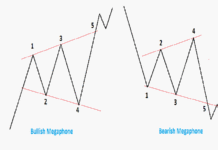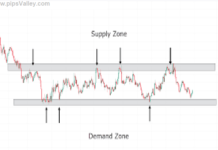
The Stochastic Oscillator is a technical indicator that is widely used in the foreign exchange (forex) market. It is used to identify potential trend reversal points by comparing a currency’s closing price to its price range over a set period of time. The indicator is plotted as two lines, the %K line and the %D line, which oscillate between 0 and 100.
The %K line is the main line of the indicator and is calculated as the current closing price of the currency divided by the highest high and lowest low over a certain number of periods. The %D line is a moving average of the %K line and is used as a signal line to generate buy and sell signals.
When the %K line crosses above the %D line, it is a bullish signal, indicating that the currency’s price is likely to rise. Conversely, when the %K line crosses below the %D line, it is a bearish signal, indicating that the currency’s price is likely to fall.
One of the key strengths of the Stochastic Oscillator is that it is able to identify overbought and oversold conditions in the market. An overbought market occurs when the currency’s price is too high and is likely to fall, while an oversold market occurs when the currency’s price is too low and is likely to rise. The Stochastic Oscillator can help traders identify these conditions by indicating when the %K line is above 80 or below 20.
Another strength of the Stochastic Oscillator is that it can be used in conjunction with other indicators to form a trading strategy. For example, traders may use the Stochastic Oscillator in combination with moving averages or support and resistance levels to identify potential trade opportunities.
It is important to note that no indicator is perfect and the Stochastic Oscillator is no exception. As with any technical indicator, traders should use it in conjunction with other forms of analysis and be aware of the risks involved with trading in the forex market.




























